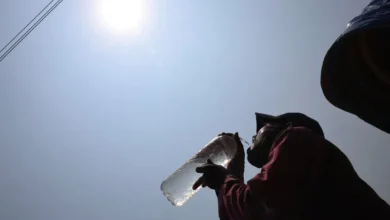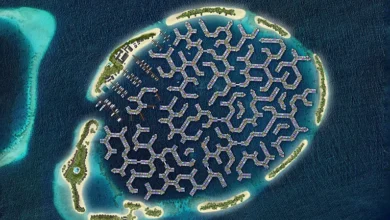Mars rock discovered by NASA suggest possible microbial life

Spots found on a reddish Mars rock found by NASA’s Perseverance rover have led scientists to believe the chemical reactions in the rock could have supported microbial life on the red planet billions of years ago.
According to NASA, analysis by the rover’s instruments indicates the rock called “Cheyava Falls” possesses qualities that “fit the definition of a possible indicator of ancient life.”
NASA said the rock “exhibits chemical signatures and structures that could possibly have been formed by life billions of years ago when the area being explored by the rover contained running water.”
The rock was in the rover’s 22nd rock core sample collected on July 21 on the northern edge of an ancient Martian river valley called Neretva Vallis. The valley was carved by water rushing into the Jezero Crater long ago.
“We have designed the route for Perseverance to ensure that it goes to areas with the potential for interesting scientific samples,” said NASA Science Mission Directorate associate administrator Nicola Fox in a statement. “This trip through the Neretva Vallis riverbed paid off as we found something we’ve never seen before, which will give our scientists so much to study.”
The rock was scanned by the rover’s SHERLOC (Scanning Habitable Environments with Raman & Luminescence for Organics & Chemicals) instrument. The scan indicated organic compounds.
The carbon-based molecules are molecular building blocks of life, but they can also be formed by non-biological processes, according to NASA.
“Cheyava Falls is the most puzzling, complex, and potentially important rock yet investigated by Perseverance,” said Ken Farley, Perseverance project scientist of Caltech in Pasadena in a statement.
He said while there’s evidence in the rock indicating chemical reactions microbial life could use together with clear evidence of water that is necessary for life, scientists have yet to determine exactly how the rock formed.
Also discovered in the veins found in the rock were olivine crystals, a mineral formed from magma.
That poses the question of whether the mineral and sulfate could have been introduced into the rock at “uninhabitably high temperatures” creating a chemical reaction that resulted in the leopard-like spots found on the rock.
“To fully understand what really happened in that Martian river valley at Jezero Crater billions of years ago, we’d want to bring the Cheyava Falls sample back to Earth, so it can be studied with the powerful instruments available in laboratories,” Farley said.










